Bat Removal
- Free Estimates
- Over 30 Years of Experience
- Affordably Priced
(256) 636-1168
Open Everyday From 7:00 am to 5:00 pm
PLEASE NOTE: We do not remove dogs, cats, mice or rats.
Humane Bat Removal
It’s quite common to discover unwanted wildlife on your property. In our years serving the Northern Alabama area, we’ve come across countless nuisance wildlife situations, and many of them involved bats on human properties. Here, we’ll tell you everything you need to know about bat removal, exclusion, and prevention. We’ll share with you tips and tricks we’ve picked up over the years, as well as advice on what you can do if your property is bothered by bats, or if you live in a high bat risk area.
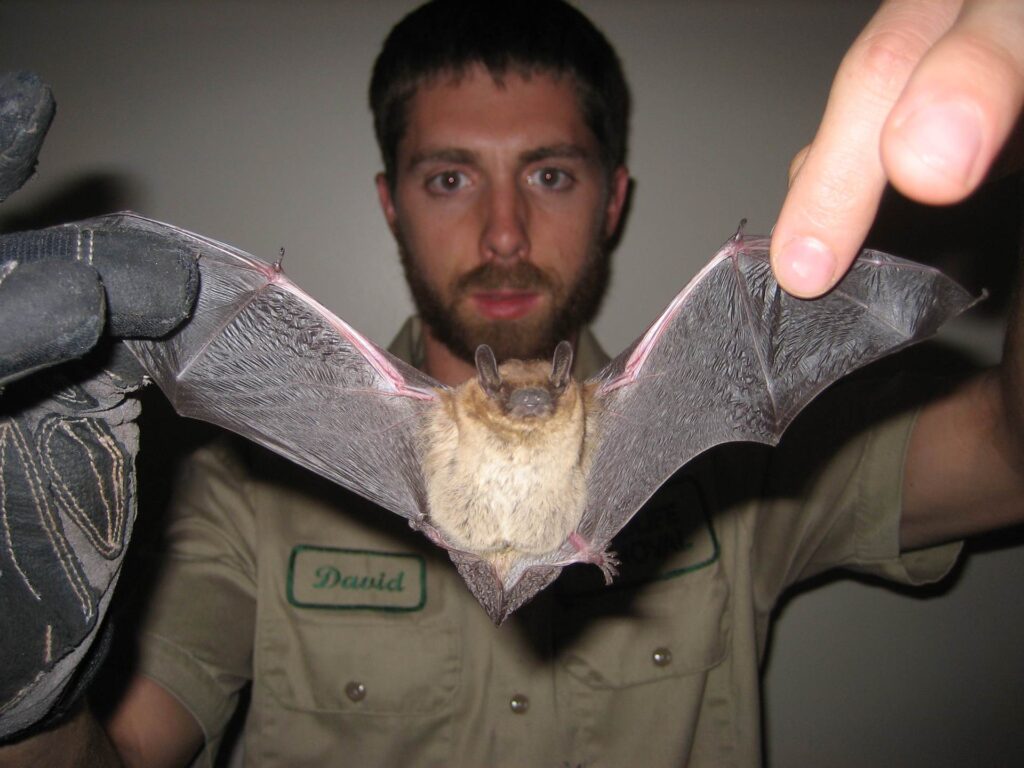
Bats and the law – why are bats protected?
Did you know that in many parts of the United States, bats are considered a beneficial species for the environment (since they eat up various pest insects), and so, are protected by the Endangered Species Act?
This is why we generally don’t recommend that when you discover a bat, or a colony of bats, living on your property, that you don’t attempt to remove or exterminate them on your own. Since this can bring about harm to either the mother bat, or the baby bats (since a lot of female bats use human homes to bring up their young), it could cause legal trouble, such as a fine, for you, or the homeowner, so we really don’t recommend that you try that.
In Northern Alabama, three species of bats are currently protected or are being considered for legal protection under the Endangered Species Act. Since bat identification can be rather tricky, we recommend that you call a professional wildlife removal service, rather than attempt the process yourself. We are more knowledgeable on the current legal status of bats in your area, so better prepared to safely and legally remove them.
If you’re dealing with a colony of bats, Nuisance Wildlife Control will do its best to safely remove all the bats from your property, without causing you (or them) any harm. However, if there are baby bats involved, you may be legally obligated to leave the bats alone until the babies are self-sufficient.
The good news here is that most bats will leave on their own, once this initial nursing phase is over.
How do we remove bats from your property?
Bat removal can be a particularly tricky process, since it’s quite common, as mentioned, for female bats to be using your home as a nesting area, to bring up their baby bats. This makes exclusion or entrapment a little trickier, since removing the mother bat from the equation can leave the baby bats without protection or nourishment, and that can get you into legal trouble.
This is why our team of wildlife removal professionals is well-trained in the appropriate bat removal techniques that are safe both for you, as well as for the bats involved. We will begin by inspecting your property, looking for the bat’s entry point. The type and number of bats present will allow us to determine the best way to proceed, in our removal process.
With bats, the best choice is usually exclusion, rather than trapping the bat, since it’s quite likely that the bat will leave the home again, in order to look for food, at night. So it’s quite likely that our experts will install an exclusion device on the previously identified entry point.
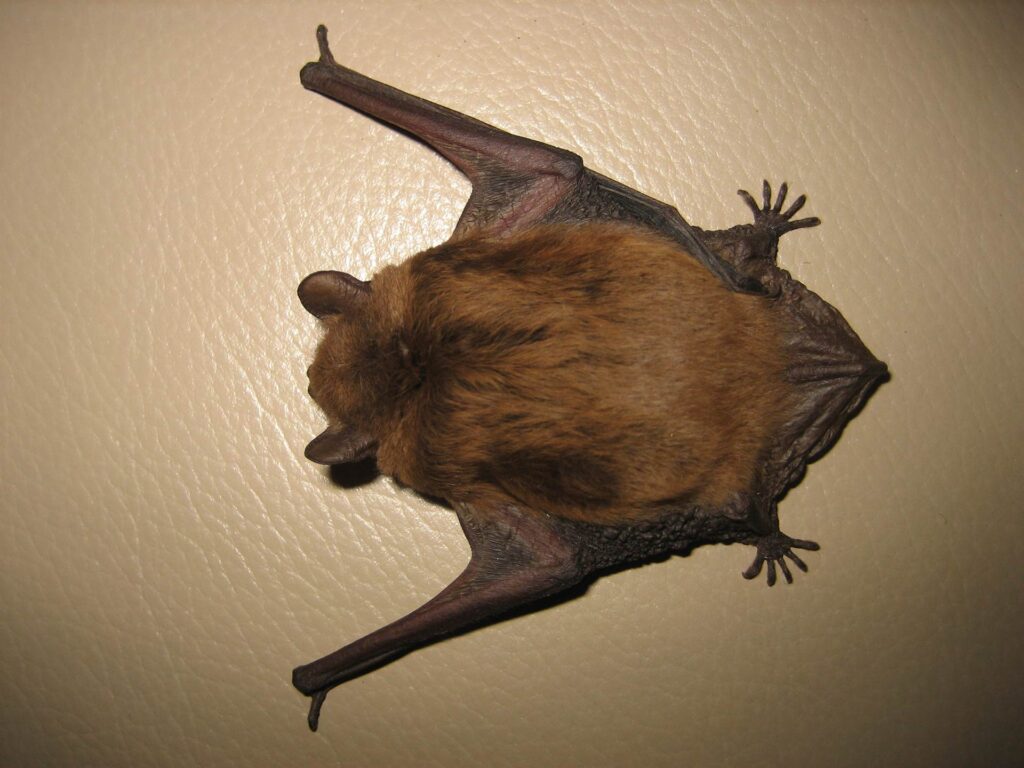
What is an exclusion device?
Think of the exclusion device as a one-way door. Exclusion devices come in multiple forms, usually depending on the type of animal you need to remove, and the number. The exclusion device is mounted on the exterior of the hole and does not in any way prevent the bat from exiting the house. However, due to the particular shape of the exclusion device, the bat is then no longer able to come back into the house.
See, this is why removing the mother bat is tricky, since the baby bats may not be old enough to leave yet.
Alternatively, if the wildlife removal pro decides it’s better, they may use a bat live trap. As this name suggests, this is similar to a normal trap. It often catches the bat(s) inside, thus allowing you or the removal company to safely transport it to a new location, where it won’t be able to bother you or your family anymore.
Obviously, to learn what removal option is best in your particular case, you’re going to want to call a professional wildlife removal service as soon as possible. At Nuisance Wildlife Control, you can reach us at (256) 636-1168, or through our website.
What happens after the bat has been removed?
It’s important to promptly seal the entry point, which can often be inside a wall and take the form of a fairly small, and unobservable gap or cracks. We encourage you to use sturdy material, such as foam, wire mesh, or other such materials that will prevent other bats (or other types of wildlife) from finding their way in. It’s important that you take these preventive measures quickly, otherwise, you’re most likely looking at a new wildlife invasion in the coming weeks.
The main issue with bats is their feces, also known as guano, which can expose you and your family to serious bacteria. Some common diseases associated with bats include histoplasmosis, and of course, rabies.
Another problem caused by bat droppings is that they have a highly acidic, highly corrosive nature. This means, basically, that the longer the bat droppings are left on your furniture, or even on your floors or home structures, the more damage they will cause. Enough accumulated bat droppings can cause serious structural damage, or even force you to throw some furniture or personal belongings out for good. So the sooner you begin the cleaning process, the better. This is also why you want to keep vigilant and remove intrusive bats from the home, as soon as you learn of their presence. If you are unable to remove the nuisance bats, we recommend that you take measures to protect your floors, and your belongings situated in the room from the bats.
Can you get rid of bats on your own?
As we’ve seen, bat removal attempts on your own can be tricky due to legal restrictions, and we wouldn’t advise it. However, if you feel you are well-suited for the job, you can study the various entrapment and exclusion devices available at local specialty stores, and attempt the bat exclusion and removal yourself.
You can also invest in bat deterrents. These are usually special devices that are motion-activated, and that will emit a strong noise, or light, to deter bats, as well as other types of wildlife from approaching your property.
However, we must warn you that DIY bat removal is usually only moderately successful at best, and takes up a lot of time, money, and energy. This is why we generally advise that you reach out to a qualified wildlife removal professional, rather than do it yourself.
Bat Prevention – here’s what you should be doing
Once the bat has been safely removed from the premises, and the cleaning has been completed, you will probably want to focus on prevention. If your area is particularly bat-heavy, or if this isn’t your first bat issue, you should start looking at what’s attracting the bats into your home.
Often, bats will be drawn to attics, basements, sheds, or other such unused storage areas, that they can safely nest in without being bothered. This is why we recommend that you clean out your storage areas on a regular basis, and minimize clutter, to deter bats, as well as any other wild animal, from singling it out as an ideal nesting space.
Other than that, your wildlife removal professional will be able to advise you on cleanliness, and other areas, where there might be an issue that’s attracting the wind animals to your home.
So you’ve got a bat problem on your property that you just can’t seem to shake? Not to worry. Reach out today for a free estimate, and to get some information on our bat removal and exclusion techniques at Nuisance Wildlife Control.
Who are we?
At Nuisance Wildlife Control, we have over thirty years of experience in the removal and exclusion of unwanted pests, such as raccoons, squirrels, birds, skunks, and indeed, bats.
Thanks to our years of experience, we’ve picked up a lot of tricks and ways to do this. We are a locally-owned business and currently serve the entire Northern Alabama region, with locations in Decatur, Huntsville, and Madison, AL.
Our team of qualified professionals offers FREE estimates, to give you a better idea of how much the removal process should cost. In order to schedule an estimate, simply call us or contact us through our website. We’re open 24/7, every day of the working week because you shouldn’t have to put up with unwanted wildlife any more than you absolutely have to.
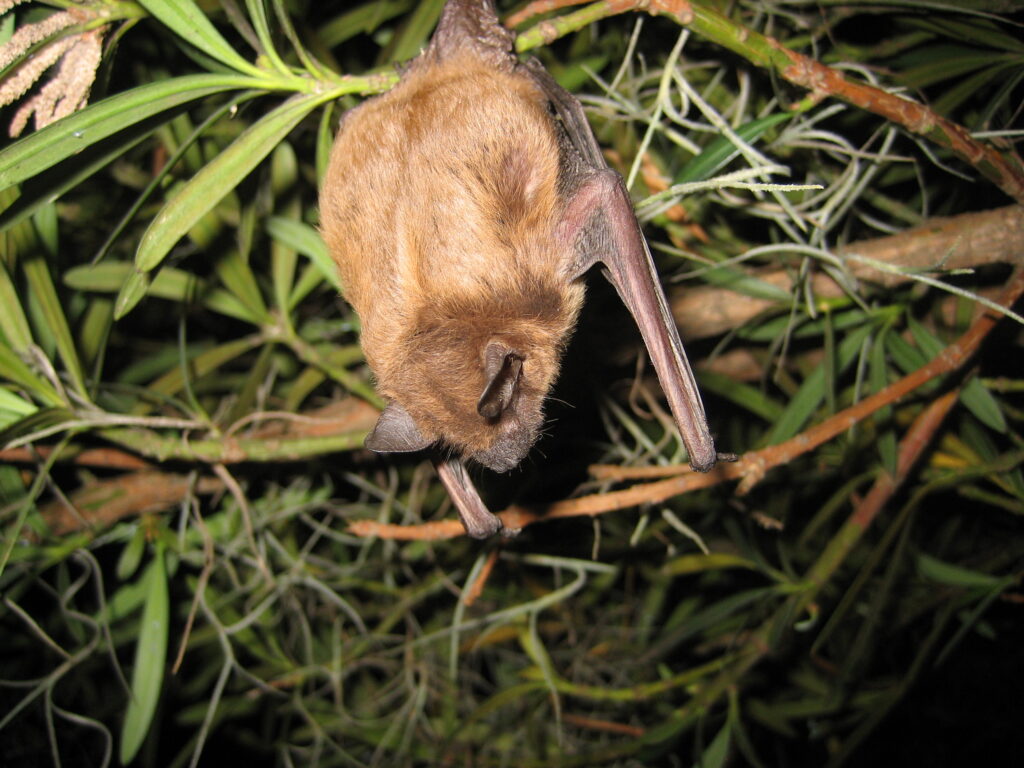
How to Remove Bats From The Attic?
It’s unsettling to have unwanted animals on our roof. And when it comes to bats in your attic, the late-night scratching and flapping of wings can give you an ominous feeling. Bats are not really dangerous by themselves, they will not attack or harm humans. But their activities in the attic are damaging to the building and can also invite bugs and other pest animals into your home. Also, bats act as host to some pathogens and their droppings can cause respiratory disease in both humans and other animals, including our pets. To learn more about bats attic visit batsintheattic.org.
How to get bats out of the attic: The process to remove bats from the attic is usually not straightforward. First, you will have to find out how they get in. More often than not, you may not realize that there are holes that let bats into your home, probably because bats are very small and can crawl in through holes less than half an inch wide.
The most common method for excluding bats from the attic is by installing a one-way exit door on their major entry point and letting them leave on their own. But this can be tricky and will not be very effective if you have a maternity bat colony in your attic.
A bat maternity colony is a colony of female bats and their pups. If the bats in your attic are mother bats and their babies, then installing a bat cone is not the best thing, because the mothers will fly out and leave their helpless, flightless babies behind. Without their mothers, the baby bats will eventually starve to death and the smell of dead bat babies will attract all sorts of insects to your attic, making the problem much worse.
Bat exclusion is a very sensitive job, and experience is crucial. Instead of a DIY bat removal that can end up botched and cost you even more, we strongly advise you to employ a professional with bat removal experience. If you have bats in your attic, give us a call and our experts will take care of the situation for you. And you literally won’t have to lift a finger.
Every bat exclusion exercise often includes at least 3 steps(sometimes more steps are included, depending on the complexity of the problem.)
The first step is usually to find the entry holes and seal them up. For bats to be inside your walls, they must have gotten in from somewhere. Therefore, the key to successfully getting them out of the walls is to find out the exact hole or crack in the wall where the bats got in through. Bats can squeeze through openings as small as ⅜ of an inch, therefore every possible entry point must be sealed, with the exception of the bats’ preferred exits, which is where the bat excluder will be installed.
Once you figure out the major exit/entry point, you can install a bat exclusion device on it. A bat excluder can be a cone or tube-shaped device which creates a one-way exit path for the bats, this will enable the bats to fly out and stay out. When the bats are all gone, the next is to do a complete clean-up and sanitize the affected area. Cleaning up bat guano has to be carefully done because they contain the spores of a fungus responsible for respiratory disease, histoplasmosis. This is one of the reasons why we always recommend that you hire a professional. Removing bats from your attic is a difficult task, and as with any pest management issue, it’s probably best to get a professional to handle it.
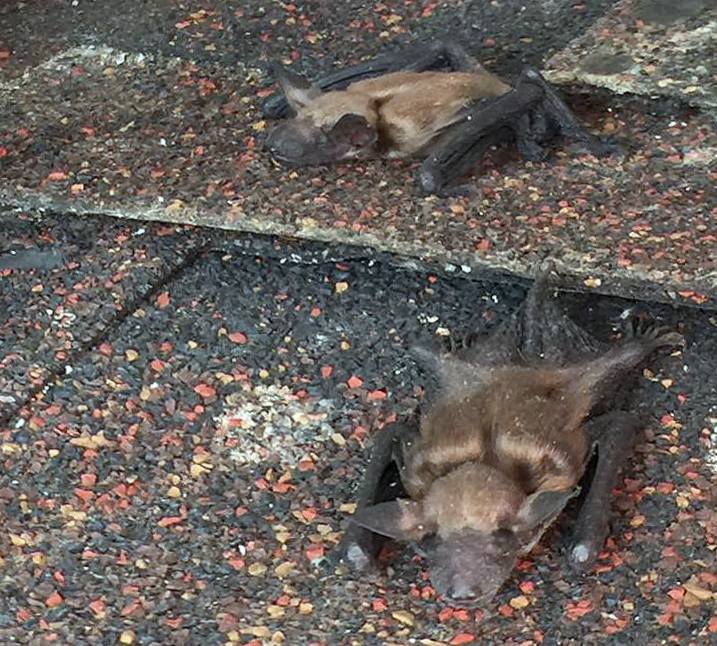
How To Remove Bats From The Chimney?
At a first glance, the chimney seems like a strange spot to find bats, but it surprisingly offers them everything they want — warmth, darkness, and seclusion. That’s why it’s common to find bats roosting in chimneys.
What Problems Do Bats Cause?
Bats cause problems in two ways, 1) diseases and 2) guano.
In terms of diseases, bats are one of the most common carriers of rabies. This is a very dangerous disease that’s transmitted through bites, so you should keep your distance from the animals. Bats also spread histoplasmosis, a fungal lung infection that can be fatal.
As bats fly near your home, they’re likely to drop some guano onto the house. Guano is corrosive, so it will damage and stain your home. It also gives off a terrible scent which can make you uncomfortable at home.
On the bright side, a single bat can eat hundreds of insects a night. So you won’t have to worry about bugs while they’re around.
Should I Use The Fireplace?
DO NOT USE THE FIREPLACE.
If bats are roosting in your chimney, then you would kill them by lighting a flame. This is both unethical and illegal. The animals might have also brought some nesting material into the chimney, so using the fireplace can burn your house down.
How To Remove Bats?
Removing a bat is much harder than removing other wildlife from your home. Bats are protected by law, so hurting or killing them is strictly off the table. Traps are also ineffective because their colonies include dozens of individuals, all of whom can fly. Repellents are also far from ideal, as they won’t work against that many animals.
The only real option is exclusion. This method works by letting bats leave at night in search of food but stops them from getting back inside. Over time, all the bats will leave the chimney on their own accord.
- Install one-way exclusion doors on your chimney. These doors provide the mechanism for exit while blocking reentry.
- Seal all other entries into your home. To ensure the bats can’t come back in, you need to force them to use the one path you placed the door on. Find and seal all holes in your chimney with some caulk and steel wool to seal off the rest.
- Remove all bat pups by hand. If you try to remove bats in the late spring or early summer, there’s a high chance that there are bat pups in the chimney. You need to remove these by hand, since they are still too young to fly on their own.
- Close off the final entry. Once all the bats are gone, you can replace the exclusion door with a permanent seal. Install a good chimney cap if you don’t have one already.
Bat removal is not an easy task, and it requires knowledge of local laws and bat life cycles. It is recommended you call a professional, as it’s easy to make mistakes and get hurt if you attempt it yourself.
Professional Wildlife Removal Services
Bat infestations are one of the hardest problems to solve, so it is recommended you call a professional to solve the issue. These experts have plenty of experience and technical knowledge, allowing them to remove the bats quickly and without harm.
Save yourself the trouble and call Nuisance Wildlife Control today.
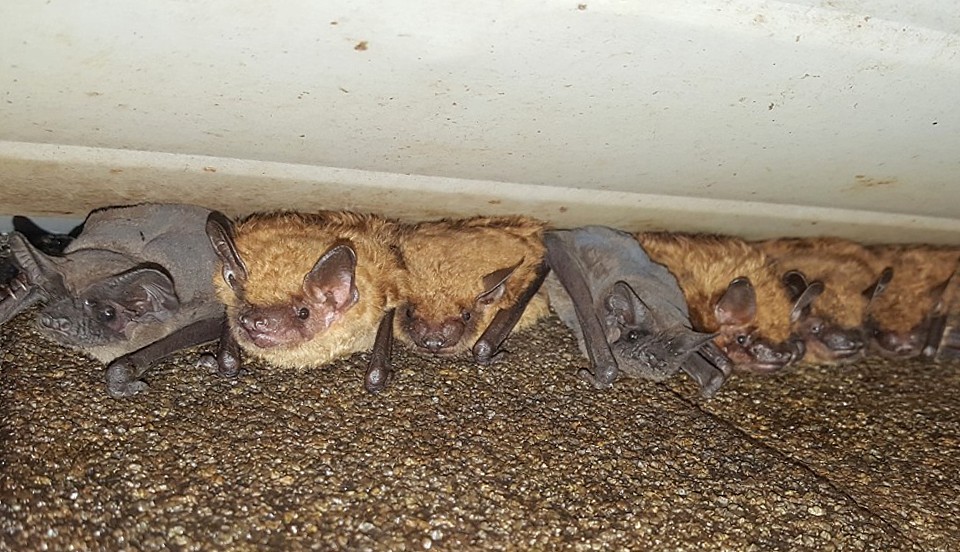
How to Prevent Your Attic from Bats?
When bats get into your home, your first reaction is that they need to be removed immediately. This is very important, as bats are able to cause a wide variety of problems, with the most serious being the disease risks that they bring to your home. The best way to remove bats from your attic is to prevent them from ever getting in. Continue reading to learn how to prevent bats from getting into your attic.
What problems do bats cause?
When it comes to bat-related problems, the biggest issue is the amount of disease these critters can spread. There are many different viral and bacterial infections that can leave you, your family, and your pets severely injured or even dead. The most dangerous part is that these diseases can be spread in many different ways. The most direct method of transmission is a direct scratch or bite from an infected bat. Other common transmission methods are through a bat’s saliva, urine, or feces. Each of these can be very hard to detect until you begin getting sick, so it is greatly important to make sure that you prevent and remove bats as best you can.
Hire a Professional
The single best way to prevent bats from getting into your attic is to hire a professional wildlife removal company. This is an important step, because these companies have seen many different bat problems and have the experience necessary to handle whatever bat infestation you may be facing. Hiring a professional takes the responsibility off of your shoulders, as well as the legal risk, as removing bats on your own can be against the law for some species in some areas. In addition, professional bat removal will keep you, your family, and your pets safe from any of the diseases that could be spread through DIY removal. Another great benefit of hiring a wildlife removal company to perform a prevention service is that these professionals will be able to spot any entry holes that any nuisance animal could use now or in the future, and they can repair any problem areas.
Inspect Your Home
One of the best ways to prevent bats from getting into your attic is to start by checking your home from top to bottom, both the interior and the exterior. Pay very close attention to the interior and exterior of your attic, your roofline, your roof, and all other parts of your home. You should be keeping your eyes out for any small holes, gaps, or cracks that could be exploited by bats or other nuisance animals. It is important to remember that bats can squeeze into tiny areas, so a very thorough check is important.
Repair Your Home
If you find any problem areas during your inspection, the next step to take is to fix the problems. This can be done with a variety of materials, but some of the most common are an all-weather sealant, aluminum sheeting, new lumber, new shingles, and other common building materials. If the repairs go beyond your ability, do not be afraid to hire a contractor, as this is hands-down the best way to prevent any bats from getting into your attic for a long time to come.
Repellents
Repellents can be a very tricky business, as many people believe they work and have had great experiences, while others will believe they are entirely ineffective. If you know of any bat repellents that work, it couldn’t hurt to apply them around your attic so you can prevent any infestation of any kind. A word of caution would be to always do your research before you buy a bat repellent.
Call for a Free Estimate
Licensed and Insured
Locally Owned and Operated Since 1984
(256) 636-1168
"Jim was very responsive and knowledgeable. I highly recommend Nuisance Wildlife Control." - Roger W.


